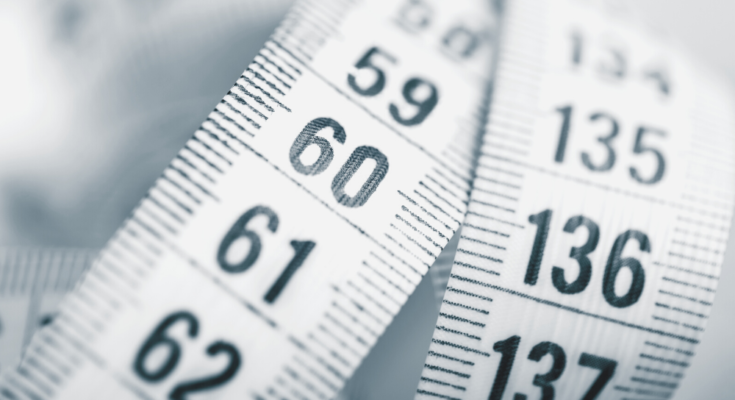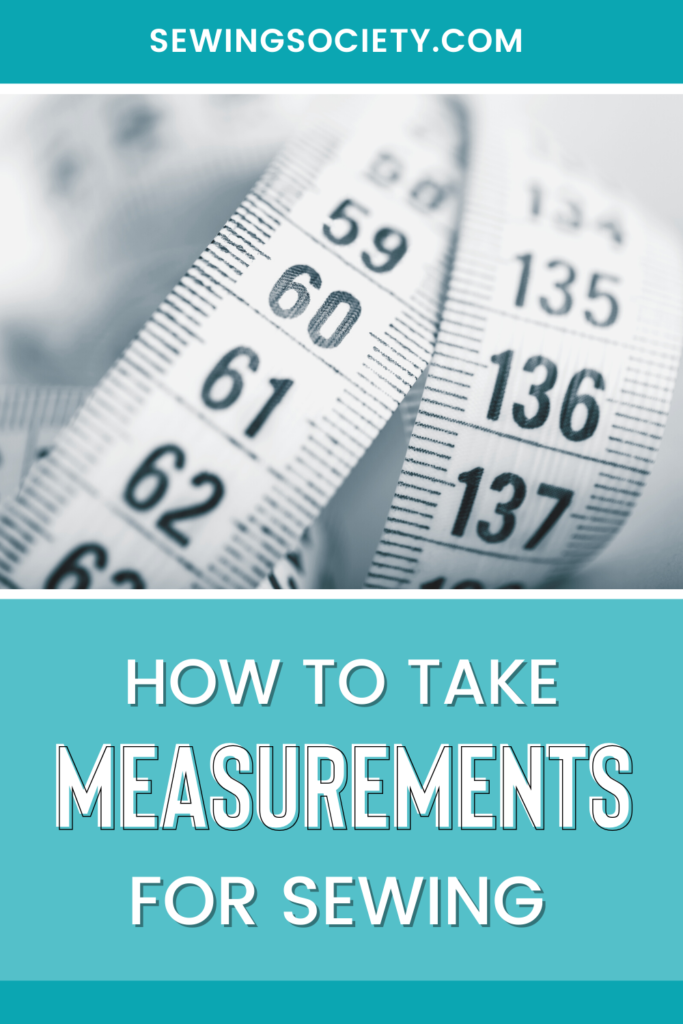Disclosure: This post may contain affiliate links. I earn a small commission when you click a link and make a purchase. Thanks for supporting SewingSociety.com!
One thing I really hate about using different pattern companies is that they do not follow any standardized sizing chart. I could be a size 12 in one brand, an XL in another, or even a size yellow!
It’s frustrating…
That’s why learning how to take body measurements for sewing is super important. Your measurements help you pick the right pattern size to sew. We want to show you how to do this accurately.
Tips and Tricks to Know Before Taking Body Measurements
To take accurate body measurements for sewing, the most important thing you need is a measuring tape. I keep several in my sewing room for this purpose. If you need one, make sure you get one that will not stretch when measuring. You will also need a piece of paper and a pencil to write down your measurements.
- Remove Bulky Clothing: You will not get accurate body measurements over a loose-fitting sweatshirt. Measuring over underclothes is ideal because that is what you’ll be wearing underneath your new garment. This especially holds true if you plan on wearing the garment with a padded bra. However, measuring over a thin t-shirt and tight-fitting pants is fine.
- Don’t Suck In: Make sure that you are relaxed when taking measurements. Accept your body. Sometimes we wish we were a size smaller, but now is not the time to suck that stomach in. Measurements are meant to have the pattern fit your body perfectly.
- Don’t Pull the Tape Too Tight: Make sure the tape is against the body, but not tight.
- Don’t Add or Take Away Anything from the Number: Body measurements should not be guesses. If you are too low or too high past your accurate measurements, your clothing will not fit right. However, it is okay to round up or down on fractions. For example, if your measurements came out to 28 ¼, you could write down 28”; or if it is 28 ¾, you could write down 29”.
- Get a Helping Hand: If you are measuring yourself, it may be helpful to have someone help you. You want to make sure that the measuring tape is laying correctly in the back when you are measuring your bust, waist, and hips.
- Take Your Time and Measure Twice: Again, if your measurements are not accurate, you may have to alter or even start over on your garment. You may want to measure both in the morning and in the evening.
What Measurements to Take
Almost every sewing pattern asks for your bust, waist, and hips measurements. You may also need to measure your arm length, shoulder width, height, and neck. Your pattern will tell you exactly which measurements to take.
How to Measure the Bust (Chest)
The bust measurement should be taken around the fullest part of your bust. Make sure that your tape measure is completely parallel to the floor and not dipping in the back. Also, keep in mind that wearing a sports bra will give you a completely different measurement than a padded bra, so it’s important to wear the same underclothes you plan to wear with your finished sewing project for measuring.
How to Measure the Waist
The waist measurement should be taken around the smallest part of your torso. This is typically around the belly button. Again, you want to make sure your tape measure is not dipping in the back and that it is parallel to the floor. The person being measured should stand tall and not lean for the most accurate measurement.
How to Measure the Hips
The hip measurement should be taken at the widest part of your hips — not at the top by your hip bone, but more around the bottom. This measurement will likely be more horizontal around the stomach, hip, and bottom.
There are few methods you can use for measuring the hips:
- Poster Board: Wrap a poster board around the waist so that it is completely parallel to the ground. Tape the poster board around the waist and then take the measurement around the poster board.
- Yard Stick: Hold a yard stick from you belly button vertical to the floor so that it is straight up and down. Next, measure around the widest part of the hips, making sure to go around the yard stick as well.
How to Measure the Height
Many times, a sewing pattern is made for a certain height. It is helpful to know your height so the pattern can be adjusted accordingly. To measure your height, take off your shoes and measure from the top of your head to the floor.
How to Measure the Shoulder Width
The shoulder width can be useful if you are drafting a bodice, or can also be helpful to know when you have to measure arm length. The shoulder length is the length from one shoulder to the other. To find the outside shoulder, feel around for the edge of the shoulder bone. This is the point you will measure from, and will also be the point when measuring arm length.
How to Measure the Arm Length
The arm length is taken from the edge of the shoulder bone down to the wrist. This is helpful in making any adjustments to sleeve length.
Also Read: How to Read a Sewing Pattern: A Beginner’s Guide
We hope this post has been helpful. If you want more help learning how to sew, sign up for SewingSociety’s emails.
Share this post on Pinterest!





